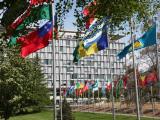In epidemiology we have a saying: What gets counted, gets acted upon.
Public health officials are far more likely to try to prevent or reduce the number of cases of disease X if we are actively looking for and tracking such cases. Not so the diseases we aren't tracking (the common cold, for example). No doubt the same principle holds true for your organization's priorities. If your CEO makes something a priority, so does your company.
The top two questions I hear
In all of my interactions with business preparedness staff around the world, regardless of the size or mission of the organization, the two questions I continually hear loud and clear are:
- How do I engage my CEO or executive suite in pandemic influenza preparedness as a priority?
- How do I sustain over time a commitment to the priority—and the flow of resources to support it?
I understand how important the answers are, because I've seen the following scenario over and over: Preparedness "happens" when a CEO understands the profound toll a pandemic can exact on the organization's business, employees, and customers and subsequently commits resources for ongoing planning efforts—even when competitors have all but dropped the preparedness ball. CEO awareness and commitment may not mean that the preparedness staff has a green light to do anything and everything it needs, but the organization is a far cry more prepared than others who lack CEO buy-in.
A champion in the ring with you
Take heart. You have a new and invaluable ally when you're working with your executive team and, specifically, your CEO. His name is William Parrett, and he's the former CEO of global professional services firm Deloitte Touche. Run now to the nearest bookstore or link to an Internet bookseller and purchase a copy of The Sentinel CEO: Perspectives on Security, Risk, and Leadership in a Post-9/11 World (Wiley: 2007). Better yet, buy a boxful so everyone on the organizational chart above you—all the way to the top—has a copy. It's a riveting, and at 186 pages a manageable, read.
This man has credentials—and authority. His career spanned nearly four decades as he served many large national and multinational businesses. He cofounded the Deloitte Global Financial Services Industry practice and served as its first chairman, and only recently stepped down as Deloitte's CEO. Bill, as I have come to know him, understands firsthand the implications of catastrophic risks: He was in the World Trade Center in 1993 during the first terrorist attack on that building.
Following the 9/11 attacks, Bill substantially increased Deloitte's investment in security upgrades. But unlike many organizations, Deloitte took a broad approach to security risk and leadership. The firm didn't just concern itself with natural disasters or terrorist attacks; it considered and responded toall of the possible dangers that lurk in our world. Bill's book provides the behind-the-scenes thinking and action that went into Deloitte's preparedness activities. It focuses on two broad issues that he considers "of compelling interest and significance":
- The evolution of corporate security and risk management into an executive-level function
- Dealing with the unexpected
Clear and compelling quotes
For those of us struggling to maintain the everyday activities of pandemic preparedness, plodding our way though the quagmire of others' and our own pandemic fatigue, this book is welcomed new energy for what we do. Chapter 6, "Imagine the Unimaginable: Avian Flu" represents a clear and compelling warning shot across the bow of any CEO's corporate ship. Here are a few examples from the book:
- Without mincing words, Bill states: "A full-blown avian influenza pandemic would exceed any recent crisis the world has faced."
- In the subsection, "A question not of if but when," he explains why the eventuality of a pandemic cannot be compared to the "fevered speculations of a global Y2K meltdown" that never materialized.
- Cutting straight to the heart of our dilemma, he notes: "Yet in many circles, the threat of a pandemic still seems remote and not terribly concerning. While most businesses have established plans to deal with natural disasters, terrorist attacks, and cybertheft, few have done anything to prepare for a pandemic."
- He observes: "Strangely, there has been relatively little public discussion about the likely effect of a pandemic on business and commerce. A widespread flu outbreak would have the potential to cripple supply chains, decimate labor pools, and greatly diminish the ability of trading partners to meet scheduled obligations."
In short, an internationally respected former CEO suggesting to other CEOs that they have their "heads in the corporate sand" may be more powerful than any document or briefing you can provide your boss.
I have had the good fortune to work with Bill and the security and preparedness staff at Deloitte. While I'm not going to tell you they have all the answers—nor would they—I remain impressed with the ongoing and truly thoughtful progress they are undertaking to better prepare their organization for the next pandemic. Bill's book outlines some of those activities.
The gift of insight
So, in a world where business-related pandemic planning seems to get harder to pursue every day due to waning concern and interest, Bill Parrett's book is a gift. It helps readers frame how pandemic preparedness must fit into the entire corporate picture of security, risk, and leadership, and it gives us the language to drive home the point.
I can only hope that this book makes theNew York Times business bestseller list soon. Do everything you can to make that happen, and just maybe your CEO will take more interest in what you are doing in the trenches to prepare your company to survive.
—Michael T. Osterholm, PhD, MPH, is Director of the Center for Infectious Disease Research & Policy (CIDRAP), Editor-in-Chief of the CIDRAP Business Source, Professor in the School of Public Health, and Adjunct Professor in the Medical School, University of Minnesota.



















